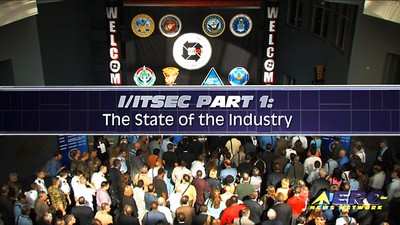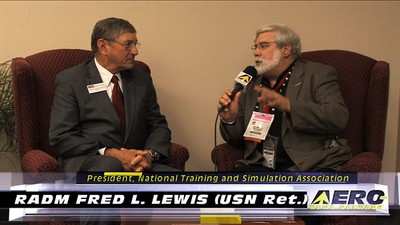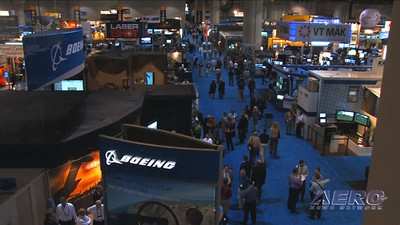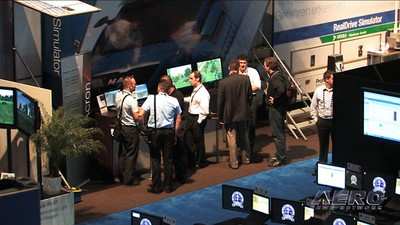Thu, Jan 13, 2011
One of the most truly fascinating events we cover each year is
the annual I/ITSEC event in central Florida. Known more formally as
the Interservice/Industry Training, Simulation and Education
Conference, 'I/ITSEC' promotes cooperation among the Armed
Services, Industry, Academia and various Government agencies in
pursuit of improved training and education programs, identification
of common training issues and development of multiservice
programs.

Initiated in 1966 as the Naval Training Device Center/Industry
Conference, the conference has evolved and expanded through
increased participation by the Army, Air Force, Marine Corps, Coast
Guard, and Industry. In 1979 it became known as the
Interservice/Industry Training Equipment Conference. The Services
have steadily evolved toward a total systems philosophy in the
acquisition of training equipment and training delivery systems. In
1986 the Conference name was further refined to the
Interservice/Industry Training Systems Conference (I/ITSC) to
recognize the increased importance of Manpower, Personnel, and
Training aspects in the systems acquisition process.

In 1992 the name was further changed to the
Interservice/Industry Training Systems and Education Conference
(I/ITSEC) to reflect the consolidation of the Manpower and Training
Committee (MTC) and the Technology and Innovations in Training and
Education (TITE) Conference with I/ITSEC. This change emphasizes
the importance of education and the man-machine interface in
meeting force-training requirements through simulation training. In
1997, to reflect continued growth and changes in the industry, the
conference name was refined to the Interservice/Industry Training,
Simulation and Education Conference (I/ITSEC).

ANN was fortunate enough to score an intriguing and insightful
interview with the President of the National Training and
Simulation Association, RADM Fred Lewis (USN-Ret) about the
military simulation industry and the critical issues that may
determine its future. Admiral Lewis is a man who understands the
value of simulation based on years of hard experience in the real
world. Lewis graduated from the U.S. Naval Academy in 1962 and was
designated a naval aviator in November 1963.

After an initial tour of duty as a flight instructor, he trained
in the F-4 Phantom and participated in numerous operational
deployments to the Atlantic and Pacific and twice deployed to the
Gulf of Tonkin for combat operations over North Vietnam.
Subsequently, he attended the U.S. Naval Test Pilot School and led
the stand-up of the Atlantic Fleet’s F-14 FRS. During a 33
year career, he accumulated over 6,500 accident-free flying hours
in tactical aircraft and over 1,200 carrier arrested landings.
More News
Outboard Section Of The Right Wing And The Right Flap Separated In Flight And The Airplane Impacted A Farm Field Analysis: The pilot was approaching his destination airport under i>[...]
Final Approach Fix The fix from which the final approach (IFR) to an airport is executed and which identifies the beginning of the final approach segment. It is designated on Gover>[...]
"Our choice of when to respond, how to respond and on which targets to respond is a consideration that we make every time... Netanyahu also noted that anyone attacking Israel &ldqu>[...]
Estimated (EST) When used in NOTAMs “EST” is a contraction that is used by the issuing authority only when the condition is expected to return to service prior to the e>[...]
Aero Linx: Coalition of Airline Pilots Associations (CAPA) The Coalition of Airline Pilots Associations (CAPA) is the world’s largest pilot trade association representing ove>[...]
 NTSB Final Report: Cessna 177B
NTSB Final Report: Cessna 177B ANN's Daily Aero-Term (05.08.25): Final Approach Fix
ANN's Daily Aero-Term (05.08.25): Final Approach Fix Aero-News: Quote of the Day (05.08.25)
Aero-News: Quote of the Day (05.08.25) ANN's Daily Aero-Term (05.09.25): Estimated (EST)
ANN's Daily Aero-Term (05.09.25): Estimated (EST) ANN's Daily Aero-Linx (05.09.25)
ANN's Daily Aero-Linx (05.09.25)






